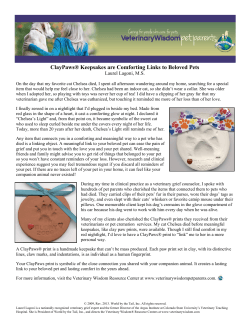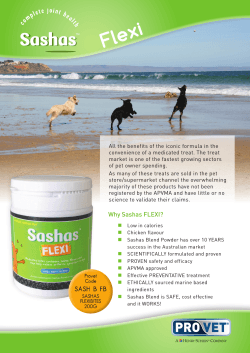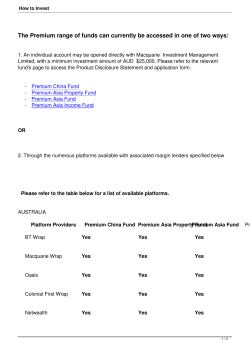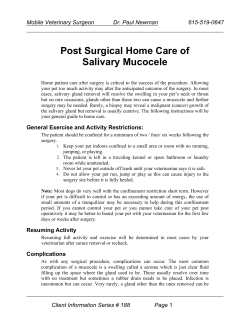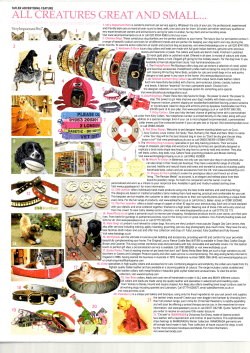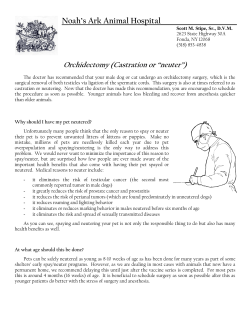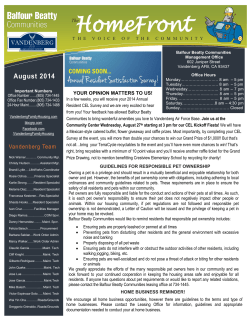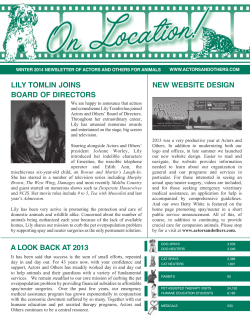
$$$$ $$$ $$ $
$$$ $ $$$ $$ $ 26 The Masstige Miracle Building a Bridge to Higher Profits As more consumers shop mass channels in an effort to save money, their desire for high-quality, even premium or luxury, items remains firmly entrenched. On the other end of the spectrum, prestige shoppers are only too happy to get what they consider a bargain on products for which they would normally consider paying more. Both groups find what they’re looking for in “masstige.” Masstige products bridge the mass and prestige markets by way of price point and perception. They’re premiumquality products, basking in the halo effect of their luxury counterparts, that mass shoppers find affordable and prestige shoppers view as valuable but not cheap. And they’re showing intense growth in many otherwise stagnant categories of retail. 27 Shampoo One area of health and beauty products that has seen a surge in higher-end demand is hair care. Driven by a new interest in salon products, which have demonstrated the benefits of using high-quality ingredients like keratin and Moroccan argan oil, masstige brands are succeeding because they feature such ingredients but are widely available and are lower cost. The $4 billion U.S. shampoo market has been growing at 2.6% annually since 2010, growth that can be attributed almost entirely to masstige (between $4 and $10) and premium (more than $10) products. Masstige shampoos specifically are growing at the highest combined annual growth rate—12.1%—of any price point in the category, as illustrated in Exhibit 1. EXHIBIT 1: U.S. Shampoo Market by Price Level ($ Millions, All Channels) 2010–2012 CAGR $4,000 $4,000 $4,200 2.5% 6.3% Premium ($10) Masstige ($4 and $10) 12.1% Mid-Tier ($2 and $4) –0.8% 2.5% Value ($2) 2010 28 2011 2012 And while unit growth since 2010 has been flat at less than 1%, the composition of the market has undergone a significant shift. Value (under $2) and mid-tier (between $2 and $4) shampoos have lost share to the premium and masstige categories, where sales have grown at a compound annual growth rate of 4% and 9%, respectively, during the same period. Among the greatest success stories in the masstige shampoo category is Organix, which promises premium ingredients and results, but whose standard-sized 13 oz. shampoos and conditioners top out at around $8 each in the United States. It’s especially well known for its Brazilian keratin therapy line, in particular the 30-day smoothing treatment, which sells for approximately $15. The salon-only Brazilian Blowout, meanwhile, can cost upwards of $400 and is eschewed by many because of the associated health risks of its key ingredient, formaldehyde. Another masstige shampoo line that promises salon-quality results without the use of harsh chemicals is CHI, owned by privately held Farouk Systems. Based in Houston and run by a team of hairdressers, Farouk Systems also produces a full line of salononly hair care products and tools. A PRODUCT IS MASSTIGE WHEN 1. It has some real or perceived effectiveness. Its attributes echo those of its luxury counterparts, which have been given the seal of approval from prestigious sources 2. It’s priced right. It’s affordable for mass shoppers but not so inexpensive that premium shoppers think it’s cheap 3.It’s easy to find. It’s available in mass channels that are conveniently located Juice Nowhere is consumers’ preference for natural products as well established as it is in food. The natural/organic foods segment grew from $13.5 billion in 2001 to $43.5 billion in 2011, a compound annual growth rate (CAGR) of 12.4%. 29 EXHIBIT 2: U.S. Refrigerated Juice Market by Dollar-Weighted Volume Change, 2012 21% Premium -6% Non-Premium Of particular strength in this category are premium beverages, which surged from $397 million to $553 million in the 2009–12 period, a CAGR of 11.7%. At the same time, beverages overall saw their CAGR contract by 1.5%, from $116 billion to $111 billion. 30 Traditional juice offerings, which are often loaded with sugar and little else, have started to fall out of favor in exchange for coldpressed and custom-blended options. Indeed, in 2011–12, unit volume in the non-premium refrigerated juice market dropped 6%, while premium unit volume grew 21%. (See Exhibit 2.) Looking to cash in on this trend is Starbucks, which in November of 2011 paid $30 million in cash to buy cold-pressed juice maker Evolution Fresh. In addition to making Evolution juices available in groceries like Whole Foods and in Starbucks’ own stores, the coffee giant opened the first Evolution Fresh store in Bellevue, Wash., in March of 2012, featuring 8 oz. handcrafted juices for $4.99, 16 oz. versions for $7.99 and smoothies priced at $6.99. There are now three retail locations in Washington state; a fourth opened in San Francisco in the fall of 2012. The price point puts Evolution squarely in the masstige fresh juice category vs. high-end BluePrint, which utilizes the same high-pressure pascalization process (HPP) as Evolution. BluePrint, which was acquired by Hain Celestial for an undisclosed amount in a deal that closed in December of 2012, is best known for its BluePrintCleanse line of juices, which starts at $65/day for six bottles—or almost $11 each. Masstige products bridge the mass and prestige markets by way of price point and perception. The contrast is even sharper in retail locations, where bottled Evolution juices start at $3.95; BluePrintJuices, meanwhile, range anywhere from $6.99 to $11.99. Other masstige acquisitions have included Bolthouse Farms, whose offerings include juices and smoothies as well as salad dressings and carrots. With sales estimated at around $700 million, it was purchased by Madison Dearborn Partners for $1.1 billion in 2005 and sold to Campbell Soup Company for $1.55 billion, or 9.5x EBITDA, in 2012. Bolthouse in late July inked a distribution deal with Core-Mark Holding Co. to make 10 of its juice flavors available to more than 30,000 convenience store retailers across the country. But many independent masstige brands remain, among them Suja Juice, whose organic cold-pressed juices are available in stores in 39 states and Washington, D.C. Pet foods Consumers’ growing push to buy natural/ organic not only extends to food, but to the food they feed their pets, whom many consider to be family members. It’s a push that intensified after more than a hundred brands of pet food were pulled from North American shelves in 2007 for containing melamine- tainted wheat gluten by way of China, which was linked to the deaths of an unknown number of cats and dogs. According to one recent survey, 63% of pet owners said they were very concerned about the safety of the pet products they buy, and 38% said they felt that natural/organic brand pet products are often better than standard national brand products. Combined sales of natural pet foods and natural pet care products are forecast to grow by 10% to 15% over the period from 2014 to 2017, to hit $9.4 billion. That concern has prompted a surge in pet foods that feature natural and, in some cases, organic ingredients, an increasing number of which are available in nationwide chains like Petco and PetSmart. While most of the brands with such ingredients are still priced high enough to be considered “super-premium,” the price range among them continues to widen, and a masstige tier is starting to take hold. Merrick, for example, 31 From notebooks to juices to shampoos, the success of the masstige category proves that some luxury comes at a price almost everyone can afford. which offers both a classic and a grain-free line, was one of the earliest entrants in the masstige pet food space; it launched its Whole Earth Farms line in 2009 with the express aim of providing holistic pet food at a value price. The opportunity presented by this masstige category is particularly unique in light of the loyalty that pet food engenders. For as any pet owner will tell you, changing foods is not a decision undertaken lightly. Other categories Of course, consumers aren’t motivated just by what’s good for them and those that they love, but by whom or what they desire to be. Just as aspirations have always driven people to buy luxury items, so they also do with masstige. With that in mind, the cachet of a Nike shoe is now available at far lower price points than ever before, its sales powered by the lifestyle image that the premium shoemaker’s logo carries with it. Moleskine, the Milanese maker of journals, diaries, notebooks and related writing accessories that invokes such great creative minds as Ernest Hemingway and Pablo Picasso in its marketing, is sold in the likes of Target 32 and Staples. The company’s unit volume grew 14% annually from 2009 to 2011, while the notebooks category as a whole dropped 1%. Moleskine’s spring 2012 IPO was more than 3.6 times oversubscribed and saw the company valued at $626 million. And for those who are simply looking for a momentary indulgence, even if it’s decidedly not good for them and has no bearing on their aspirations at large, there’s the growing masstige category of chocolate. Notable brands include San Francisco–based Ghirardelli, whose products are carried in mass channels across the country. From notebooks to juices to shampoos, the success of the masstige category proves that some luxury comes at a price almost everyone can afford. v AUTHORS Michael Dart Senior Partner and Head of Private Equity and Strategy Practice michael.dart@kurtsalmon.com Drew Klein Manager, Private Equity and Strategy Practice drew.klein@kurtsalmon.com
© Copyright 2025



